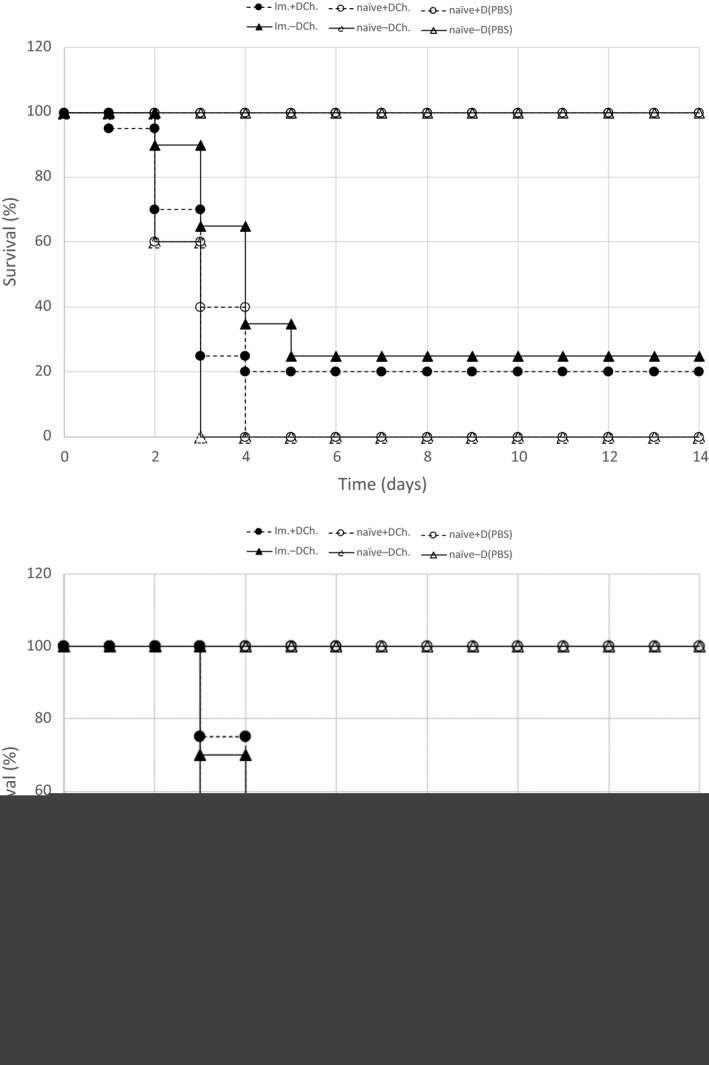Figure 3.

The effect of vitamin D status on the adaptive immune response to a Listeria infection. Two survival studies (top and bottom graph) were performed with two sets of mice with an age range of 20–21 weeks. In the top experiment, 20 vitamin D‐sufficient and 20 vitamin D‐deficient mice were immunized with the LADD strain (1.23E+04 CFUs). As an immunization and diluent‐only control, 10 mice were immunized with diluent only (PBS). After 30 days, the 20 immunized mice (Im. +D Ch. and Im. −D Ch.) and five PBS‐immunized mice (naïve +D Ch. and naïve −D Ch.) from each group were challenged with an ~1 LD50 dose (4.16E+06 CFU) of wild‐type L. monocytogenes 10403S strain. The remaining five PBS‐immunized control mice [naïve −D (PBS) and +D naïve (PBS)] were rechallenged with diluent only (PBS). In the second experimental replicate (bottom), 25 vitamin D‐sufficient and 25 vitamin D‐deficient mice were immunized with the LADD strain (1.43E+04 CFUs). Ten mice were immunized with diluent only (PBS). After 30 days, the 25 immunized mice (Im. +D Ch. and Im. −D Ch.) and five PBS‐immunized mice (naïve +D Ch. and naïve−D Ch.) from each group were challenged with an ~LD50 dose (3.22E+06 CFU) of wild‐type Listeria. The remaining five PBS‐immunized control mice [naïve −D (PBS)and +D naïve (PBS)] were rechallenged with diluent only (PBS). In each experiment, mortality was monitored and scored over a 2‐week period. Statistical analysis revealed no significant difference in the survival curves of the D‐deficient mice compared to the D‐sufficient mice.
